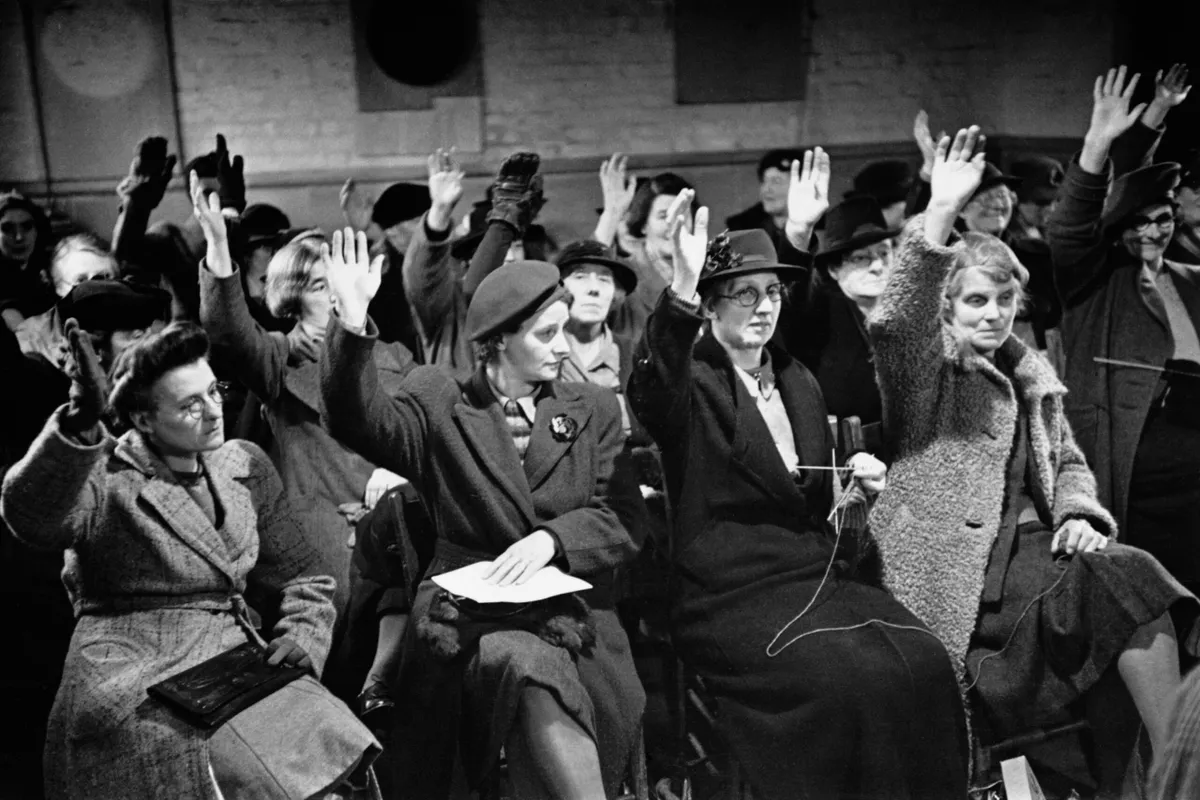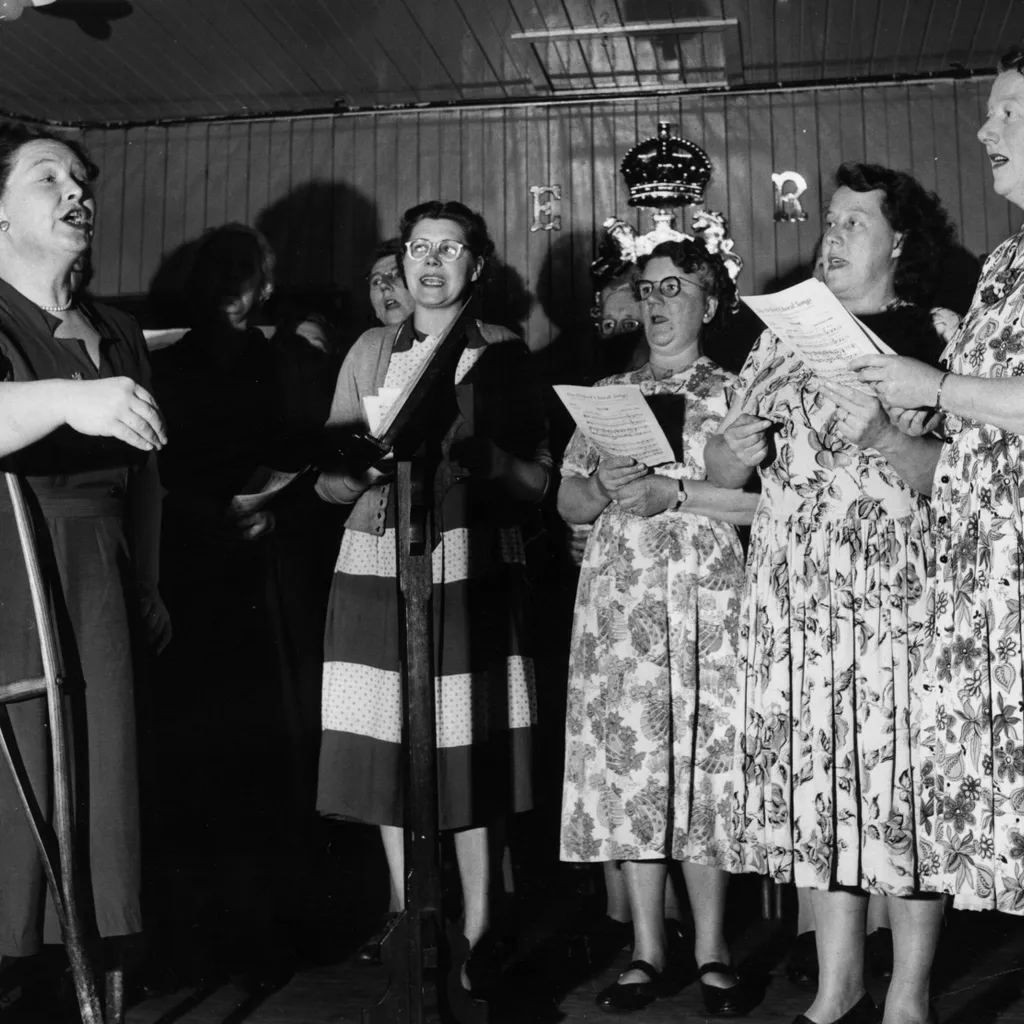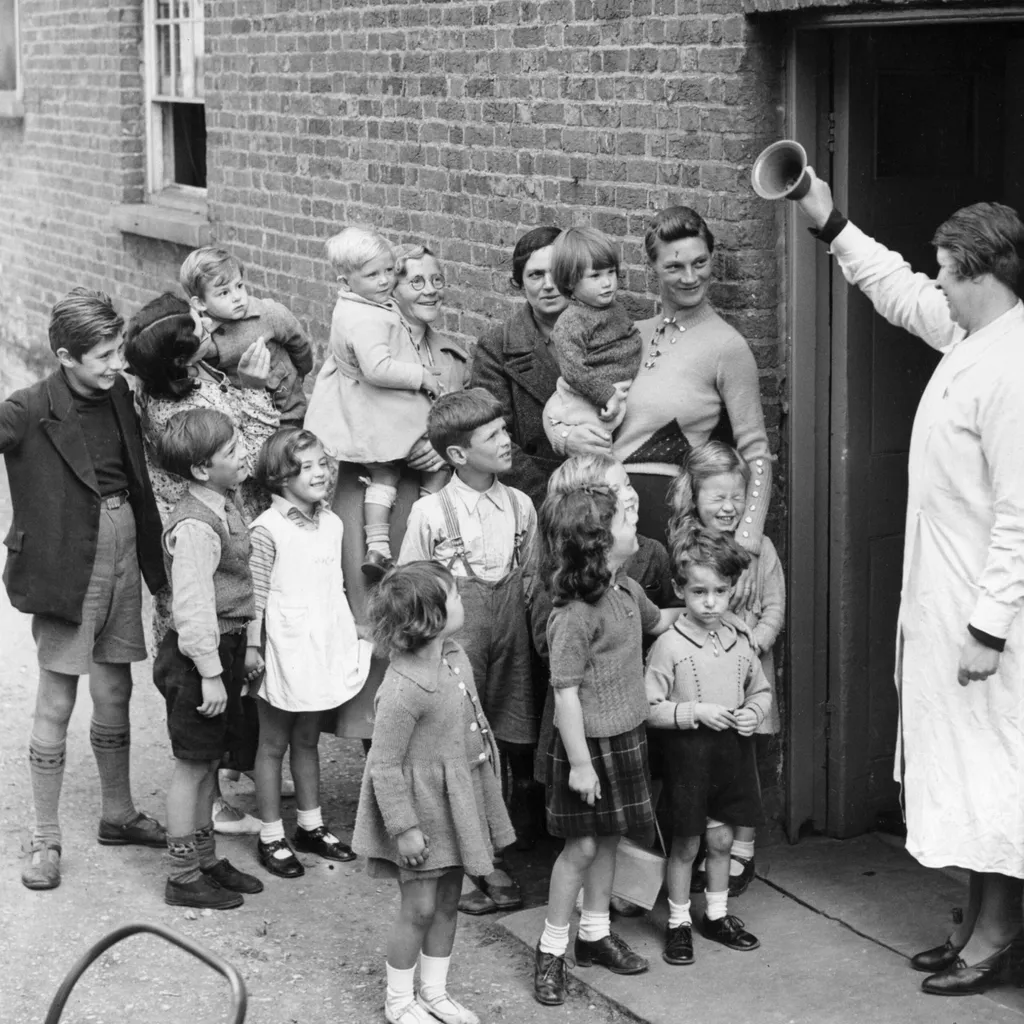Be honest: what comes to mind if you close your eyes and imagine a typical member of the Women’s Institute? It is probably a grey-haired lady of a certain age dressed sensibly rather than smartly in tweeds, pearls and a twinset. She’s mildly right-wing, Anglican and spends most of the time in a country kitchen fragrant with the scent of freshly baked cakes. Once a month she goes to the village hall for a chat, a cup of tea and a lecture on the vicar’s recent holiday illustrated by slides which don’t work properly.
Any student of the past soon realises that history is full of illusions. This is one of them. Throughout its existence the Women's Institute has kept exhaustive archives, both nationally and locally; even the briefest of glimpses through these proves the usual stereotype quite wrong. The WI was set up by political activists and educators to help women of all ages and backgrounds not only to bring up their families and improve their communities, but to get out into the world and make a difference.
True, in the early days most of its members were rural housewives because until 1965, no one could form a WI unless the population it served was below 4,000. Between the 1970s and the 1990s many were at least middle-aged (with the advent of working mothers) and obviously, if you want a cake baked properly there’s no one better to ask. But from its very first moment, the WI was radical, inclusive, and remarkably influential. You should be proud if anyone in your family was ever a member: she helped to shape our world.
The Canadian roots of the Women's Institute
One of the commonest assumptions about the WI is that it’s British through and through. In fact its founder was a Canadian, Adelaide Hoodless (1857-1910) from Ontario. After losing her infant son to an infection caught from contaminated milk Adelaide made it her mission to teach as many people as she could about the basics of food hygiene. At that time, 20 per cent of Canadian children were dying before their fifth birthdays.
Adelaide reckoned that the best way to spread her message was through women. They were responsible for feeding their families and keeping them healthy. But how was she to reach them? Many Ontario men in the late-20th century belonged to Farmers’ Institutes which held monthly meetings to discuss the husbandry of stock and crops. Why not form a sister organisation, suggested Adelaide, where farmers’ wives and daughters could come together to learn from one another and from visiting speakers about matters closer to home? And so the WI was born, in Stoney Creek near Hamilton, in February 1897.
“It won’t last long without a man to run it”, claimed an early critic; indeed, the WI might never have started at all without the support of a prominent member of the Stoney Creek Farmer’s Institute, Mr Erland Lee. With his assurance to colleagues that the end of the world would not necessarily arrive if wives were allowed out once a month, the Women’s Institute movement quickly grew in numbers and public awareness. Its earliest days in Canada are commemorated at Erland Lee’s former home in Stoney Creek, which has been turned into a WI Museum.
It took another 18 years for the Women's Institute to be exported to the UK. Its missionary was Mrs Alfred Watt (1868-1948), better known as Madge. She was formidable: one of Canada’s first female university graduates and a passionate evangelist for the WI. Widowed in 1913, she came to Britain to enrol her sons at boarding school and to direct her considerable energy into establishing the WI in the mother-country.
The first WI meeting
A garden shed in Llanfair PG, Anglesey, hosted the first ever Women's Institute meeting in Britain on 16 September 1915. Its Minute Book, held by the University of Wales at Bangor, lists the committee and some of the subjects members discussed, ranging from ‘Salads and Salad Dressings’ to ‘Child Welfare’ and ‘The Easiest and Most Humane Way of Killing a Fowl’.
Because of its constitution, there was no social hierarchy (on paper, anyway): everyone was equal in the Women's Institute. This was a revolutionary idea, and took some getting used to. It meant the lady of the manor was expected to rub shoulders with the farm-labourer’s wife, perhaps for the very first time; the 14 year-old daughter with a granny who could remember the Crimean War. It embraced everyone, from the academic to the illiterate and from royalty to scullery-maid. As one early member put it: “We are yet bound together in one great, unbreakable sisterhood.”
One of the first WIs in England was at Singleton in West Sussex, where the ladies held meetings in the back room of a local inn. This was a pragmatic choice – one of them was the landlady – but it aroused much suspicion. What kind of an outfit was this, to tempt wives and mothers away from the kitchen to secret sessions at the pub?

For many British women (Scotland’s version of the WI, the Scottish Women’s Rural Institutes, started in 1917) the WI was their first taste of practical democracy. No woman had a parliamentary vote until 1918; Madge and her sister pioneers had to explain to ordinary members what voting meant and how it worked, to equip them to elect their Institute’s president and committee members.
“An Institute is not ruled,” said Madge. “But rules itself… Men may laugh at the ‘little woman’ but the time will come when that little woman without tying herself to railings, or knocking off policemen’s hats, will, simply by making her views known throughout the Institute, be able to demand and get healthful improvements in village life, up and down the land… Use that power to its full.” This was heady stuff. Power? For women?
In fact it was part of the WI’s purpose, envisaged by its founders in Britain, to prepare ‘ordinary’ women for the sort of power they would undeniably hold once they became enfranchised. Several of the leading lights behind the WI movement in Britain were also fervent suffragists.
No politics please, we're the Women's Institute
In the interests of inclusivity the WI has always been strictly non-denominational and avoids party-politics like the plague. That’s why the unfortunate Mr Blair was slow-handclapped in 2000: it wasn’t that the members at the AGM that year were all Tories, but the fact that he was using their meeting as a platform for party-politics that upset them. They considered this both discourteous and patronising. Religion and politics can be divisive, and the WI has always preferred to concentrate on what unites us.
From that point of view, the WI was founded in Britain at exactly the right moment. During the First World War, the country needed all the food it could get: thanks to the German U-boat blockade there was a real risk of malnutrition, if not starvation. The WI readily volunteered its members to serve on the home front as producers of meat, vegetables, fruit and preserves. They ran rabbit, pig and poultry clubs; agricultural co-operatives and markets; preserved soft fruit in new-fangled canners or jars; made pickles and chutneys and – of course – boiled vats and vats of jam.

Those who didn’t cook ran classes on how to be a tinker, mending saucepans and buckets, or a cobbler, recycling old motor-bike tyres for workmen’s boots and more elegant bicycle tyres for ladies’ shoes. They went out into the fields to gather sphagnum moss to dress wounds, thistledown to fill quilts, dried ferns to stuff dolls and wisps of wool from the hedgerows to spin into yarn. This was the first age of national make-do-and-mend.
Women's Institute campaigns
After the war, like everyone else the WI turned its attention towards building a ‘country fit for heroes’. Campaigning has always been at the heart of the WI, ever since Adelaide Hoodless’s attempt to make sense of her son’s death.
In 1920 – ever practical – the WI campaigned for a ‘Bastardy Bill’ to give financial and moral support to a wartime legacy of single mothers and their illegitimate babies. Illegitimacy was never mentioned in polite company. It was particularly courageous, therefore, for a newly-established group of women eager to be taken seriously to fight so publicly for the rights of society’s outcasts.
In 1922 another campaign began, this time for the better awareness and treatment of sexually transmitted diseases (STDs). This was a practical concern for WI members: those men fortunate enough to have returned from the western front often brought STDs with them, picked up in soldiers’ brothels. Again: not a nice thing to talk about, but unless someone did, there was risk of an epidemic.
So the WI stepped up to the plate, just as they did in 1924 when campaigning for more female police officers. This wasn’t just a matter of equality in the workplace: WI members recognised that if a woman suffered domestic or sexual abuse, she was far more likely to report it to another woman than to some burly great copper.
Jerusalem and the Women's Institute
As the WI grew in confidence and influence, it was decided that the institution needed its own anthem and a nationwide competition was launched. Grace Hadlow, one of the WI's founders, was a keen musician and thought little of the entries they received.
Hubert Parry's hymn Jerusalem, written in 1916, had been sung at a suffrage rally at the Royal Albert Hall in 1918 and in 1924 Hadlow suggested that it would make a suitable anthem for the WI. It was universally adopted and the strains of 'And did those feet in ancient time' could be heard at meetings up and down the country.

The Women's Institute during WW2
Between 1939 and 1945 WI members revisited their wartime role. Just as important as their practical efforts in food production was the social impact of their work with evacuees. In December 1939, a questionnaire was sent to every WI secretary in the country to be filled in by members who were looking after
evacuated children and in some cases, their mothers. It asked whether the children suffered from head-lice, skin-diseases, bed-wetting and “other similar insanitary habits”. If the children’s mothers were with them, WI members were asked if there were any “who lacked the knowledge or will to train their children in good habits”.
A total of 1,700 Institutes replied, and their response, published in a WI book called Town Children through Country Eyes (1940), was shocking. Children were repeatedly described as filthy, sometimes ridden with vermin. Of 849 children who arrived in Dorchester, Dorset, 229 had lice, 19 had skin diseases and 43 habitually wet the bed. One distraught WI member reported a family from Bethnal Green climbing on to the bed to urinate and defecate; another had to cut her charges free of the ragged clothes into which they had been sewn who knows how long ago.

The news wasn’t all bad, but overall the picture revealed by WI members in Town Children through Country Eyes was grim, and ironically for a rural organisation, it highlighted the desperate state of Britain’s urban slums with uncompromising clarity. Social architect William Beveridge acknowledged his debt to the Women’s Institute, whose members were arguably the first to open Britain’s eyes to the urgent need for a national welfare state.
Tony Blair and the Calendar Girls
The Tony Blair episode in 2000 and the phenomenal success of the Calendar Girls film in 2003 invigorated the WI at the beginning of the 21st century. It had been flagging a little in the decades after the war, when many women who might have been members were now out forging careers or working in public service – both of which the WI had been urging them to do for years. In this, the movement was a victim of its own success. It gave its members the confidence to make a life for themselves outside the home, which meant they had no time to go to WI meetings.
Now, over a hundred years on from the first WI meeting held in the UK, there’s no stopping it. Numbers are growing, not just in rural villages but inner-city neighbourhoods, professional workplaces, university campuses, hospitals and beyond. Its members (212,000 and rising) still campaign, still support one another, still value meeting each other face-to-face. Perhaps that personal contact is even more precious now, in the era of virtual reality, than ever before. The WI was, after all, the original social network.
WI women try not to mind too much about the lazy old stereotypes, preferring instead to celebrate a remarkable heritage. Certainly, they have boiled jam and sung Jerusalem – but they have also made history.
Jane Robinson is the author of A Force to be Reckoned With: A History of the Women's Institute (Virago Press, 2011)
